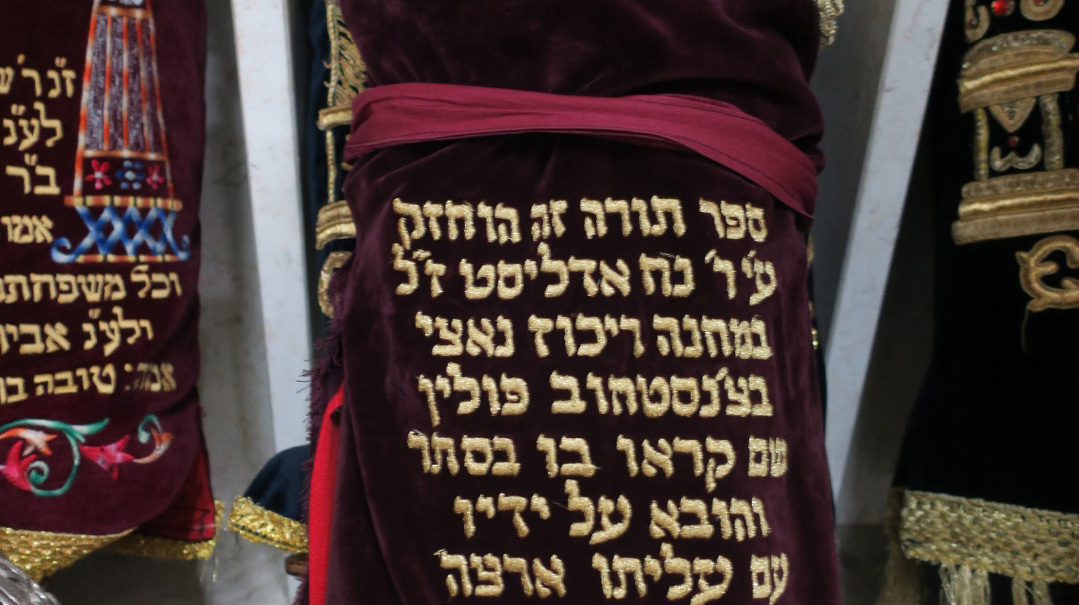Spreading the Word

Soon hundreds of Kohanim will be fully prepared to resume the avodah in the Beis Hamikdash

O
ne of the many things that continues to surprise and delight me about the Torah community is the creativity of so many eager to make Torah more accessible to their fellow Jews.
Not long ago, as I was exiting a morning minyan, a young avreich rushed after me. I did not know him, but apparently my Mishpacha photo is not yet too outdated to be used for purposes of identification. He wanted to tell me about his new project, and was smart enough to share how much he enjoys visits from my son Yechezkel to repair his major appliances.
And what is that new project? Nothing less than creating a virtual reality introduction to all the korbanos, through which those wearing special headsets can actually participate in all stages of bringing the korban.
At a subsequent meeting, I asked my new friend, Mordechai Twersky: Why? What drew you to this idea? He acknowledges that the project, V-HaReinu — Virtual Holy Reality, which will probably cost upwards of half a million dollars to bring to full fruition, is not an obvious one for him: “I’m not a Kohein. I’m not a bechor [Rav Chaim Kanievsky ztz”l held, following the Ohr HaChaim Hakadosh, that the avodah in the Beis Hamikdash will return to the firstborn]. I’m not an expert in Kodshim.”
What he is, however, is good at putting disparate parts together. He knows that there is a kollel in Bnei Brak working on a 14-volume compendium on the laws of the Beis Hamikdash. He has a religious friend, Eliezer Ben Hamou, who works in a unit that prepares virtual reality training materials for the IDF and who has animated much of the avodah of the Temple. Putting all these elements together, he has already authored nearly 30 virtual reality scripts.
Approximately 40 years ago, I learned in a beis medrash where the late Gerrer rosh kollel Rav Avrohom Mordechai Isbee used to learn with his young son in the afternoon. The Isbees are Kohanim, and one day I overheard Rav Isbee seek to arouse his eight-year-old son with words echoing the Chofetz Chaim in his day: “If we don’t know this when Mashiach comes, who will?”
Soon hundreds of Kohanim will be fully prepared to resume the avodah in the Beis Hamikdash, as a consequence of virtual reality training.
RABBI YISROEL ROLL recently presented me with a unique siddur, titled Siddur HaTalmud — a typesetting miracle. At the top of each page are Gemaras and other marei mekomos from Chazal related to a specific paragraph of text of tefillah, and at the bottom a commentary called V’sein Chelkeinu B’Sorasecha, based on the chiddushim of Rav Moshe Shapira on the siddur.
Though Rav Moshe never gave shiurim on the siddur per se, he had complete mastery of the siddur, in all its nuschaos. Anyone who ever had the privilege of hearing him daven can attest to the centrality of tefillah to him. In his shiurim, he frequently cited different nuschaos hatefillah as proof texts for concepts he was developing.
The new siddur appears in time for Rav Shapira’s sixth yahrzeit on Asarah B’Teves, and is one of a plethora of new publications based on his Torah. Some years ago, Rabbi Akiva Tatz told me that he has gathered over 16,000 shiurim of Rav Moshe. And these shiurim are being listened to by thousands — my oldest grandson enjoys sharing with me every comment on “journalists and the like” Rav Moshe directed to me in a chaburah on perek Cheilek. And many sets of shiurim — e.g., Pirkei Avos, Hilchos Dei’os, perek Cheilek — are being readied for print by talmidim.
Rav Aaron Lopiansky and Rav Yehoshua Hartman, two of Rav Moshe’s closest talmidim, who have between them brought 20 or so annotated volumes of Maharal to print, have both written effusive haskamos for Rabbi Roll’s Siddur HaTalmud, and I can attest that he writes with exceptional clarity.
Siddur HaTalmud is probably too heavy for the average tallis zekel, but it is an ideal format for anyone interested in deepening their knowledge and appreciation of the siddur. The clear, bold text and instructions taken from Rav Lopiansky’s Aliyos Eliyahu siddur, make for easy reading. And the commentary is, as expected, filled with startling new insights. —
Always Be Ready for a Test
Of late, most of the best stories I hear come from my once-a-week trainer, who has numbered over the years several gedolei Yisrael among his clients. This week’s story was told to him by Rav Moshe Silberberg, and involves an outstanding rebbi in Ashdod’s Imrei Emes cheder.
One day, shortly before Pesach, that rebbi left the classroom in the middle of a class and went to the school office, where he asked the principal if he could make a phone call. The principal knew that only the most important matter could cause this particular rebbi to leave his classroom, so he told him to use the school phone.
The rebbi called his wife and asked her, “Did you already throw out the clothes that we had decided to get rid of before Pesach?” That question was followed by another, “Including my old coat?” The answer to both was affirmative, and the rebbi hung up the phone and headed back toward the classroom.
But now the principal’s curiosity had been piqued a second time. Nothing he had heard in the course of the conversation could account for his star rebbi leaving class in the middle of a lesson, and he could not resist asking what had been so urgent. The rebbi replied that he had just remembered that all the money for his daughter’s upcoming chasunah had been in the coat that was thrown out.
Now, the principal had another cause for wonderment: How had the rebbi remained so calm, upon learning that the money was lost?
The rebbi told him: “What would I have gained by getting angry or upset? Who knows if the loss of that money was not the biggest opportunity of my life, the test of whether or not I have really integrated the Torah lessons that I impart to my class? I did not want to flunk that test.”
The lesson of that story might be summarized: We will all face tests at some point, and everything that precedes that test is preparation for it. If we have prepared ourselves well, that test may well become the occasion of our greatest achievement in life.
MY VERY FIRST INTERVIEW for the biography of Rav Yaakov Kamenetsky was with the late Dr. Yaakov Greenwald, who was not only a superb psychotherapist, but a talmid chacham in his own right and a confidant of numerous gedolim, including Reb Yaakov, the Steipler Gaon, and the late Manchester Rosh Yeshivah, Rav Yehudah Zev Segal.
The very first story that Dr. Greenwald told me concerned precisely such a test that he had inflicted on Reb Yaakov. Reb Yaakov’s rebbetzin was scheduled for open heart surgery, and Reb Yaakov asked Dr. Greenwald, who was going to Eretz Yisrael, to ask the Steipler Gaon for a brachah for a successful surgery and a speedy recovery.
Dr. Greenwald fulfilled his shlichus, and was eager to inform Reb Yaakov that he had done so. So he called Reb Yaakov’s home after Shacharis in Eretz Yisrael, forgetting that Monsey is seven hours behind Jerusalem in time, not seven hours ahead. As soon as Reb Yaakov’s daughter groggily picked up the phone, he realized his mistake, and wanted only to hang up. But by that time, Reb Yaakov was already on the phone.
The latter had presumably been frightened by the call and assumed that it was from the hospital where the Rebbetzin was recovering from surgery. Hospitals do not call relatives of those post-surgery in the middle of the night to tell them that their loved one is resting comfortably. And the Rebbetzin was already in her mid-eighties.
Yet Reb Yaakov quickly figured out what had happened, and he did everything possible to relieve Dr. Greenwald’s discomfiture. He spoke of the Rebbetzin’s hope to be home for Shabbos, and of how she had already asked him to make sure that there were beans in the house for the cholent. Only after engaging in a lengthy casual conversation, and ensuring himself that Dr. Greenwald had recovered, did Reb Yaakov go back to sleep.
More than 30 years later, Dr. Greenwald’s succinct summary of that interchange remains: If you haven’t been working on yourself for 80 years, you cannot possibly rise to the occasion at such a moment.
(Originally featured in Mishpacha, Issue 943. Yonoson Rosenblum may be contacted directly at rosenblum@mishpacha.com)
Oops! We could not locate your form.







